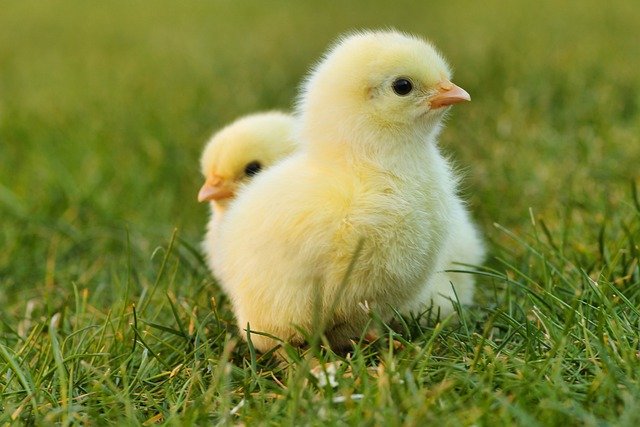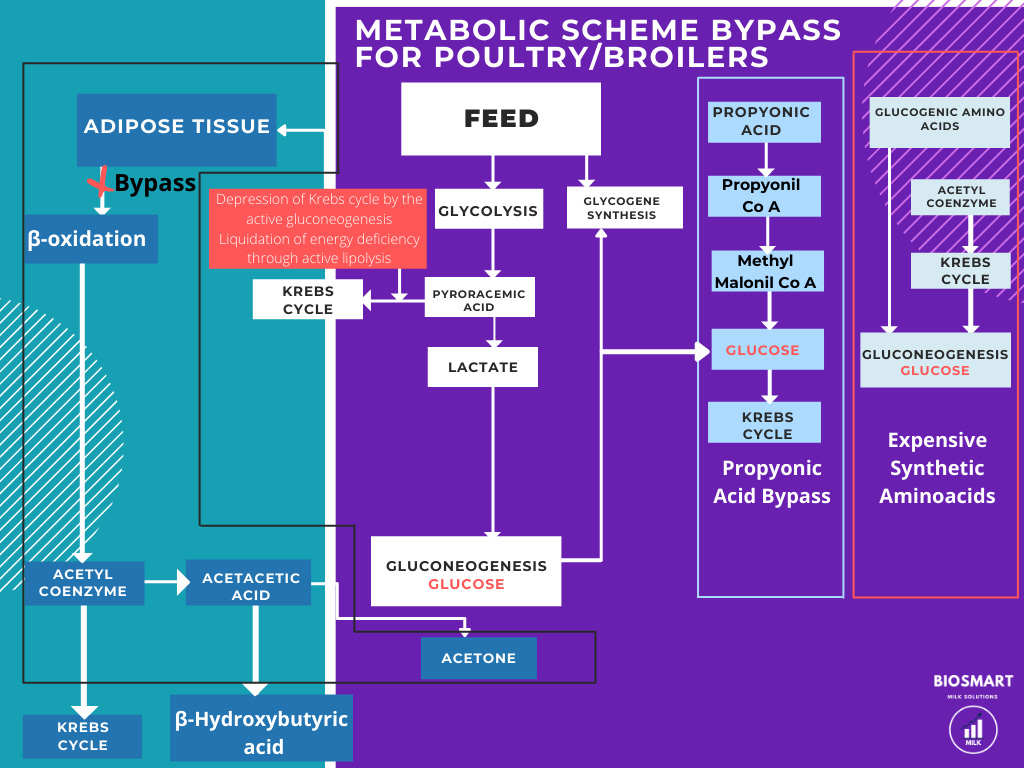How does it work?
The common practices of using unbalanced and not meeting the real needs of animal feed, as well as such energy-intensive processes as pregnancy and lactation, lead to the formation of a negative energy balance in animals.
Meanwhile, glucogenesis and glycogenolysis that are supposed to eliminate the energy deficit in the case of the body’s depletion do not provide the animal with glucose in the required concentrations. It is well known that the main substrates of gluconeogenesis are lactate (formed during glucose catabolism) and amino acids (formed during the catabolism of muscle tissue proteins).
With an unbalanced diet and high energy consumption, the forced anabolism of such substrates of gluconeogenesis as lactate and amino acids leads to a loss of biomass, decreased productivity, and general weakness of the animal.
Until recently, the main way to solve the problem of eliminating energy deficiency and gaining biomass was the introduction of expensive glucogenic amino acids into the animal’s diet, in excess concentrations.
Glucogenic amino acids include alanine, arginine, aspartic acid, cysteine, glutamic acid, glycine, histidine, hydroxyproline, methionine, serine, threonine, tryptophan, and valine.
The degradation products of these amino acids are involved in the processes of gluconeogenesis, replenishing glucose reserves, and in the processes of protein synthesis.
It is important to note that excess of amino acids is used by the body mainly as a source of energy.
Protein synthesis in this case occurs impulsively and is initiated by a decrease in the excess concentration of free amino acids in the chyme to a normal level.
With this approach, expensive synthetic amino acids mainly served as a substrate for glucose synthesis.
A revolutionary solution for the problem of negative energy balance was the creation of the complementary feeding “Bypass”.
“Bypass” contains energy sources, organic acids, phosphatidylcholines, stimulators of protein synthesis, and nucleic acid synthesis.
The composition also includes activators of the propionate pathway of glucose synthesis and activators of gluconeogenesis.

The unique core of the Bypass technology is based on activating additional pathways of glucose synthesis in the blood that reduce the body’s requirements for essential glucogenic amino acids.
This makes it possible to exclude synthetic amino acids from the composition of feed.
The exclusion of synthetic amino acids from the feeding ration leads to the activation of the previously suppressed own proteolytic enzymes of the animal’s body.
The body begins to extract essential amino acids naturally from the protein in the feed.
In the process of normal protein hydrolysis, the concentration of free amino acids in the chyme does not increase at once, but increases in a prolonged manner.
The amino acids obtained in this way are used for the synthesis of endogenous protein, which is evenly distributed over time.
Our feeding strategy leads to significant savings in money spent on the purchase of expensive synthetic amino acids.
The growth rate of broiler chickens with “Bypass” feeding is higher than the growth rate with synthetic amino acids.

How do we achieve it?
This effect is achieved because of the glucose synthesis through an additional, not associated with amino acids, pathway – shunt, the body uses amino acids mainly for protein synthesis.
In an animal’s body, Bypass feed provides:
- Strengthening the availability of amino acids obtained from protein substrates by regulating the concentration of “essential” amino acids in the blood of animals;
- Normalization of carbohydrate metabolism in the body, an increase of the central metabolites supply, and, as a consequence, an increase of the “nonessential” amino acids;
- Fast weight gain during the period of active growth.
Why should I use “Bypass” for broilers/poultry?
The use of special feed “Bypass” is an economically profitable and efficient solution for the following reasons:
